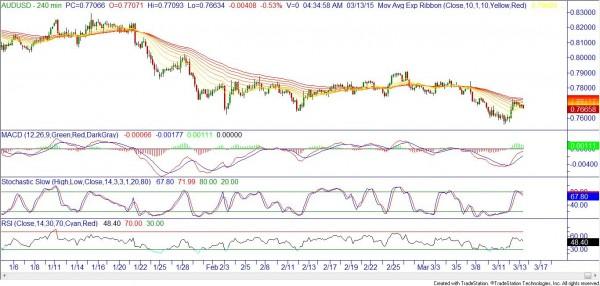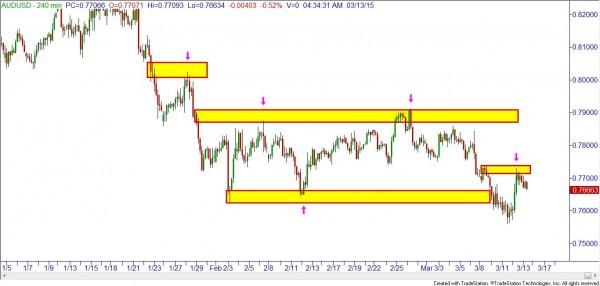![]()
Hello traders! Over my last 18 years of trading, and my last 9 years of teaching with Online Trading Academy, there has been a very consistent theme I’ve heard and seen from newer traders. That is, “It can’t be that simple.” This week’s newsletter will show how new/unsuccessful traders seem to want to add complexity to their charts, while experienced/profitable traders choose to add simplicity.
One of my “hobbies,” you could say, is to compare and apply concepts from successful people to my own life, especially in the world of trading! A prime example is Michael Jordan whose said, “I’ve failed over and over and over again in my life and that is why I succeed.” Also, “I can accept failure, everyone fails at something. But I can’t accept not trying.” If one of, if not the greatest basketball players in the history of the game admits to not being perfect but that working hard and improving is the key to success, I think I’ll listen to him!
This week’s newsletter refers to a different famous person and one of my favorite ideas in trading. Colin Chapman is a famous British engineer and the founder of the Lotus sports car company. He once said, “Adding power makes you faster on the straights. Subtracting weight makes you faster everywhere.” This phrase was slightly changed to “add lightness.” What does that really mean? Instead of only concentrating on making a bigger, faster car, he wanted to make his lighter which translated to an overall more effective race car.
In trading, and the classes that I teach, I prefer to “add simplicity.” When a new student who has been trading for a while talks to me about what their charts look like, very often I can see that they have become very good at “adding complexity” which has obviously not translated to big profits! If they were thrilled with the amount of money they were making, they probably wouldn’t be spending a week in a class to learn how to trade! So what does adding complexity mean in trading?
In the following chart, which is nearly identical to what a recent student showed me, is the added complexity.
This student, let’s call him Carl, decided to add a bunch of indicators and oscillators to his charts because someone somewhere on the internet said they were good. As Carl continued to add complexity, he was becoming more and more frustrated in his trading as he was looking for the perfect combination of indicator confluence to place his trades. This is very common! We call it the “Holy Grail” syndrome. “If I can just find the perfect combination of indicators I’ll make a lot of money trading and never be wrong again!” Anyone out there do this as well? I bet many of you have. Carl’s main problem with this is that he had no idea what these extra tools were originally designed for, and therefore didn’t know how to use them properly. Some are for trending markets, some sideways, some you must adjust based on up or down trends, etc. If you are using the wrong tool for the job success is difficult to come by!
While I appreciate Carl’s determination, (see Michael Jordan’s quotes above) he was making his charts more complex yet not adding any extra performance to his trading. In fact, he was trading worse! This should have been obvious if he was tracking his own performance and noting if he was making more or less money every time he added a new tool to his charts. He wasn’t doing this; he didn’t feel the need to because he was an “experienced trader” and “trade journals are for newbies.” Believe me, I laughed when he said that! If you aren’t making money in trading or if you just added some tool to your charts, you MUST keep a journal to see if it is helping! You may not rely on your memory, it must be tracked. If you don’t, I have no sympathy for you when your profit and loss statement is full of red trades. Adding complexity without profitability means you are doing it wrong!
Using our proven supply and demand zones I showed Carl how simple charts could really be, yet still be very effective in trading. Again, most experienced traders who come to class don’t believe it can be this simple. As a reminder, we are looking to see where institutions have a stack of unfilled buy or sell orders waiting to be filled. An imbalance in our supply and demand equation at specific price levels is what makes price turn, NOT a MACD crossover or Stochastics being overbought or oversold! Price action is first, everything else lags. Waiting on a “signal” from these indicators/oscillators usually makes you late to a trade causing your reward to risk ratio to be skewed.
This is an example of a chart with supply and demand properly marked (yes, there are a few smaller levels in there which I didn’t mark.)
Can you see how simple or “light” this chart is? By adding simplicity you will probably add profitability to your profit and loss statements! In addition to taking fewer trades, you will probably be taking fewer losses by avoiding the bad ones.
So what did we learn this week? By adding simplicity to charts most traders will avoid taking many more losses which can add frustration and a lack of profitability. Anytime you choose to add complexity, make sure it is adding to your profitability by journaling your results from using this new tool. If it doesn’t help you make more money, get rid of it! Add lightness to your charts!
This content is intended to provide educational information only. This information should not be construed as individual or customized legal, tax, financial or investment services. As each individual's situation is unique, a qualified professional should be consulted before making legal, tax, financial and investment decisions. The educational information provided in this article does not comprise any course or a part of any course that may be used as an educational credit for any certification purpose and will not prepare any User to be accredited for any licenses in any industry and will not prepare any User to get a job. Reproduced by permission from OTAcademy.com click here for Terms of Use: https://www.otacademy.com/about/terms
Editors’ Picks
EUR/USD clings to gains above 1.0750 after US data

EUR/USD manages to hold in positive territory above 1.0750 despite retreating from the fresh multi-week high it set above 1.0800 earlier in the day. The US Dollar struggles to find demand following the weaker-than-expected NFP data.
GBP/USD declines below 1.2550 following NFP-inspired upsurge

GBP/USD struggles to preserve its bullish momentum and trades below 1.2550 in the American session. Earlier in the day, the disappointing April jobs report from the US triggered a USD selloff and allowed the pair to reach multi-week highs above 1.2600.
Gold struggles to hold above $2,300 despite falling US yields

Gold stays on the back foot below $2,300 in the American session on Friday. The benchmark 10-year US Treasury bond yield stays in negative territory below 4.6% after weak US data but the improving risk mood doesn't allow XAU/USD to gain traction.
Bitcoin Weekly Forecast: Should you buy BTC here? Premium

Bitcoin (BTC) price shows signs of a potential reversal but lacks confirmation, which has divided the investor community into two – those who are buying the dips and those who are expecting a further correction.
Week ahead – BoE and RBA decisions headline a calm week

Bank of England meets on Thursday, unlikely to signal rate cuts. Reserve Bank of Australia could maintain a higher-for-longer stance. Elsewhere, Bank of Japan releases summary of opinions.
RECOMMENDED LESSONS
Making money in forex is easy if you know how the bankers trade!
Discover how to make money in forex is easy if you know how the bankers trade!
5 Forex News Events You Need To Know
In the fast moving world of currency markets, it is extremely important for new traders to know the list of important forex news...
Top 10 Chart Patterns Every Trader Should Know
Chart patterns are one of the most effective trading tools for a trader. They are pure price-action, and form on the basis of underlying buying and...
7 Ways to Avoid Forex Scams
The forex industry is recently seeing more and more scams. Here are 7 ways to avoid losing your money in such scams: Forex scams are becoming frequent. Michael Greenberg reports on luxurious expenses, including a submarine bought from the money taken from forex traders. Here’s another report of a forex fraud. So, how can we avoid falling in such forex scams?
What Are the 10 Fatal Mistakes Traders Make
Trading is exciting. Trading is hard. Trading is extremely hard. Some say that it takes more than 10,000 hours to master. Others believe that trading is the way to quick riches. They might be both wrong. What is important to know that no matter how experienced you are, mistakes will be part of the trading process.


